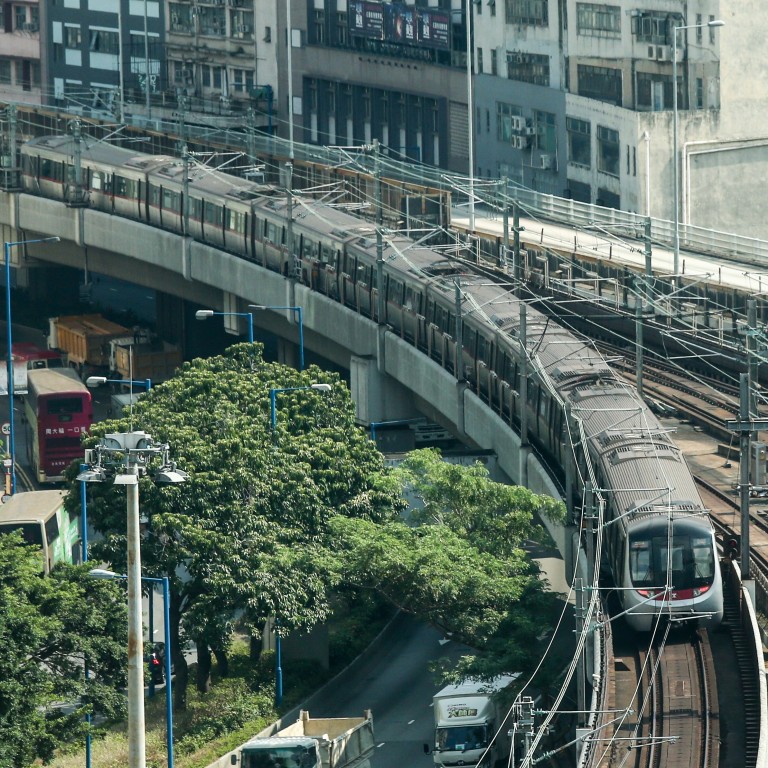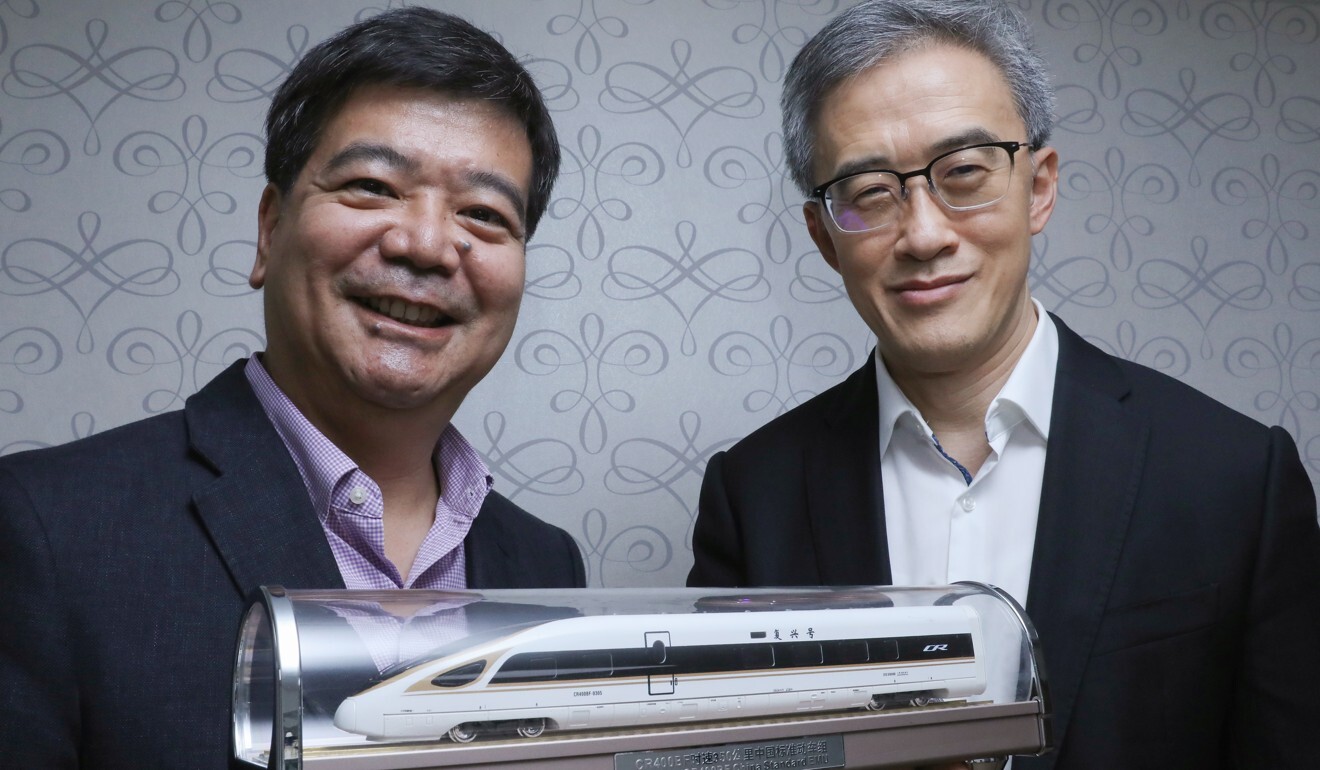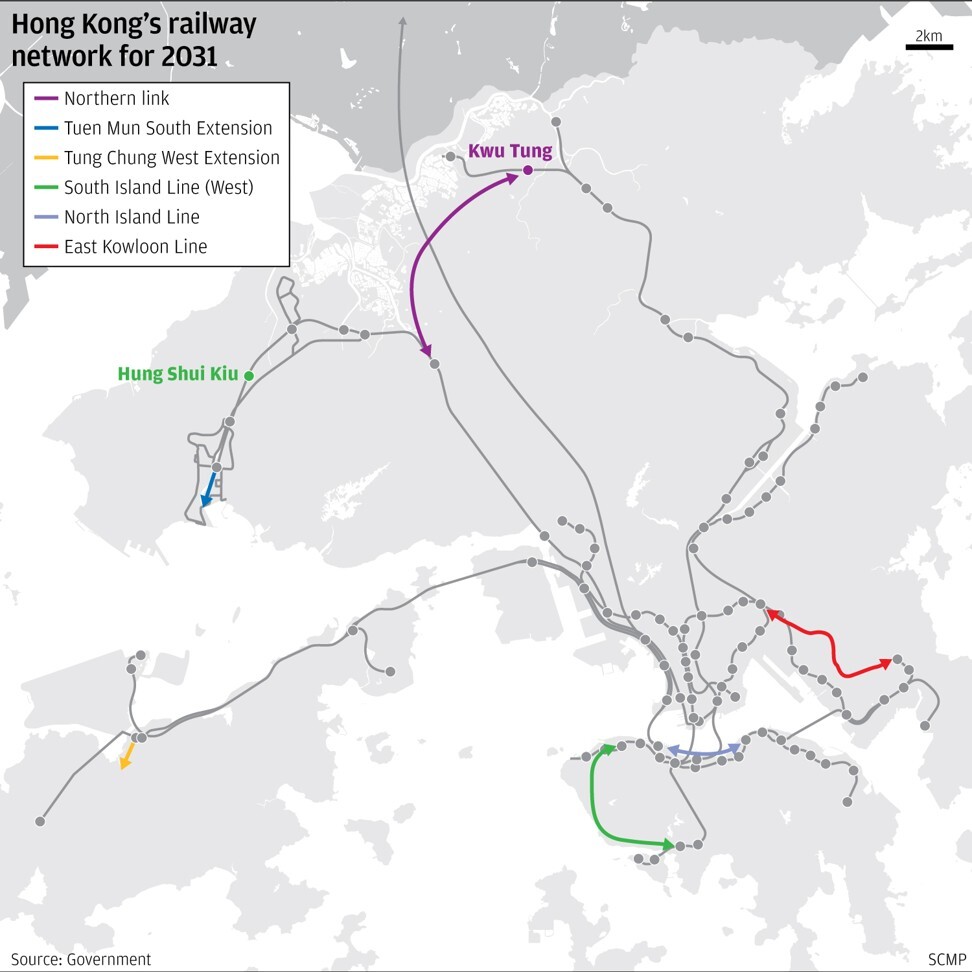
Hong Kong economy’s revival under threat from major delays to rail projects, experts warn
- Delays cost the city ‘way over HK$100 billion’ in lost economic gains as experts say infrastructure investment is best way to rejuvenate post-pandemic economy
- Only two of seven projects from government’s 2014 blueprint are progressing, pushing back completions by years
Lengthy delays to Hong Kong’s railway projects are holding back the revival of the city’s battered economy and chalking up foregone losses worth more than HK$100 billion (US$13 billion), rail experts have warned.
Urging the government to speed up, they said it was not good enough that work had begun on only two out of seven projects from its 2014 blueprint, and both now had much later completion dates than originally scheduled.
Henry Cheung Nin-sang, chairman of the Association of Hong Kong Railway Transport Professionals, also said the best way to rejuvenate the Hong Kong economy, which had been hit hard by the Covid-19 pandemic, was to loosen public purse strings on infrastructure projects.
Will Hong Kong’s major infrastructure projects cater to people’s needs?
The city is already lagging behind in regional railway development, and experts expressed concern that the situation had resulted in brain drain of railway professionals in recent years.
“We are very unhappy with this prolonged delay. It is unacceptable,” said Henry Cheung, of the association whose 180 members include rail engineers and operation managers.
“Six years have gone by, but the government has rolled out only two projects recently. Their completion dates have also been pushed back by at least five or six years.”
The 2014 Railway Development Strategy set out the government’s plans for up to 2031, outlining seven rail projects based on projections of transport demand, cost-effectiveness and the needs of new developments in various districts.
They are the Northern Link and Kwu Tung station, Tuen Mun South extension, East Kowloon line, Tung Chung line extension, Hung Shui Kiu station, South Island line (West), and North Island line.
So far, there has been news on the launch of works for only the Tung Chung line extension and Tuen Mun South extension, with announcements in April and last month respectively.

The MTR Corporation, Hong Kong’s rail operator, will carry out detailed planning and design under an ownership approach, which means it is responsible for funding, constructing and operating both projects.
Morris Cheung Siu-wa, former president of the rail training centre MTR Academy and honorary president of the transport professionals’ association, asked: “Why has it taken the government six years to roll out only two projects?”
The Tung Chung line project comprises a 1.3-km extension from the Tung Chung station to a new terminal station at Tung Chung West, a new intermediate Tung Chung East station between Sunny Bay and Tung Chung stations, and a tunnel extension for the Airport Railway.
The government now expects construction to start in 2023, with the two stations completed by 2029 – five years later than the deadline set out in the 2014 report – and the tunnel by 2032. The project, costing about HK$18.7 billion, is projected to bring economic benefits worth about HK$61.4 billion over 50 years of operation.
The HK$11.4 billion Tuen Mun South extension project involves a 2.4-km extension along Tuen Mun River, with two new stations at Tuen Mun Ferry Pier and Tuen Mun Area 16. It is projected to generate HK$28 billion worth of economic benefits over 50 years, taking into account reducing commuting times and the cost of operating other forms of transport.
Work on the project is now expected to start in 2023 for completion in 2030, eight years later than the target in the 2014 report.
Rail construction scandal: whistle-blower wants court to overturn panel’s findings
Hong Kong’s only ongoing rail project is the scandal-hit HK$90.7 billion (US$11.6 billion) Sha Tin-Central link, the city’s costliest rail project that is expected to be fully operational by early 2022.
The project was plagued by repeated cost overruns and delays, and suffered a major setback after allegations of shoddy work and reports of missing documents.
Morris Cheung said the delays in railway development would seriously impact the city’s overall economy.
“For every infrastructure project, the government projects the direct economic benefits generated every year, in terms of time savings and so on. Taking into account other gains such as the creation of jobs and economic activities, I’d say the forgone economic losses from these delays are astronomical, way over HK$100 billion,” he said.
Henry Cheung said the absence of new rail projects in recent years had resulted in an exodus of local rail engineers forced to seek jobs in Singapore, Malaysia and Thailand.
Taking into account other gains such as the creation of jobs and economic activities, I’d say the forgone economic losses from these delays are astronomical, way over HK$100 billion
“The most efficient way to stimulate the economy and create jobs is to increase public expenditure on infrastructure. It could quickly add some feel-good factors to the market and let people see some hope,” he said.
Both of them felt Hong Kong would move faster on its rail projects if the government took a more proactive approach like Singapore’s Land Transport Authority (LTA).
The LTA is a statutory body responsible for planning, designing and maintaining Singapore’s land transport infrastructure and systems, with the private sector involved in building and running public transport projects.
“It does all the preliminary tasks such as planning and designing a rail project and then just calls for a tender. It doesn’t need to go back and forth with other parties, and that makes the whole process faster and more efficient,” Morris Cheung said.
Henry Cheung added: “Hong Kong is different. The government is too reliant on its sole rail operator, the MTR Corp, for the whole process from planning and designing, to tendering and supervising the work.”
Final cost of Hong Kong’s scandal-hit rail link drops to HK$90.7 billion
He said Hong Kong’s way slowed down the implementation because the MTR Corp had to spend a lot of time negotiating with many parties, including the government itself, landlords of sites affected by the project and even bus operators and district councillors.
“Is it possible to also inject competition in the tendering process? This is the question the government needs to consider,” he said.
Morris Cheung also urged the government to take a more flexible approach in carrying out the Tung Chung line extension project.
“Actually the Tung Chung line extension could be divided into three sections. The government could open one station at a time as soon as it is completed, so the public can enjoy the railway facility at the earliest possible time,” he said.
Quentin Cheng Hin-kei, the spokesman for commuter concern group Public Transport Research Team, agreed that the rail delays were unacceptable and that speeding up infrastructure projects would help revive the economy.
However, for efficient delivery of quality railways, he said, the government needed to break the MTR Corp’s current monopoly.
“As long as there is no competition in the railway market, there is nothing to guarantee the quality of rail projects and their efficient delivery. Past problems such as cost-overruns and delays may continue to crop up,” he said.

Responding to questions from the Post, a spokeswoman for the Transport and Housing Bureau said railway projects involved huge capital investment so the government had to plan prudently and weigh factors such as available resources and actual housing development in relevant areas.
While a strategic benefit of implementing a railway project was to create job opportunities, many other factors had to be weighed before the government could move ahead, she said.
She added the projects proposed in the 2014 blueprint also had “different degrees of complexities” that affected their projected implementation targets.
As various government bureaus and departments might be involved in evaluating projects, she said, the MTR Corp often had to provide additional information as required.
She added there was progress on three more projects listed in the 2014 blueprint: detailed planning and design for the Northern Link would begin soon, and the MTR Corp had been asked to improve the technical design proposals for the East Kowloon line and North Island line.
“When the details of a proposed railway scheme are available, such as the alignment, location of stations and implementation timetable, the government will consult the public, including the Legislative Council and the relevant District Councils,” she said.


